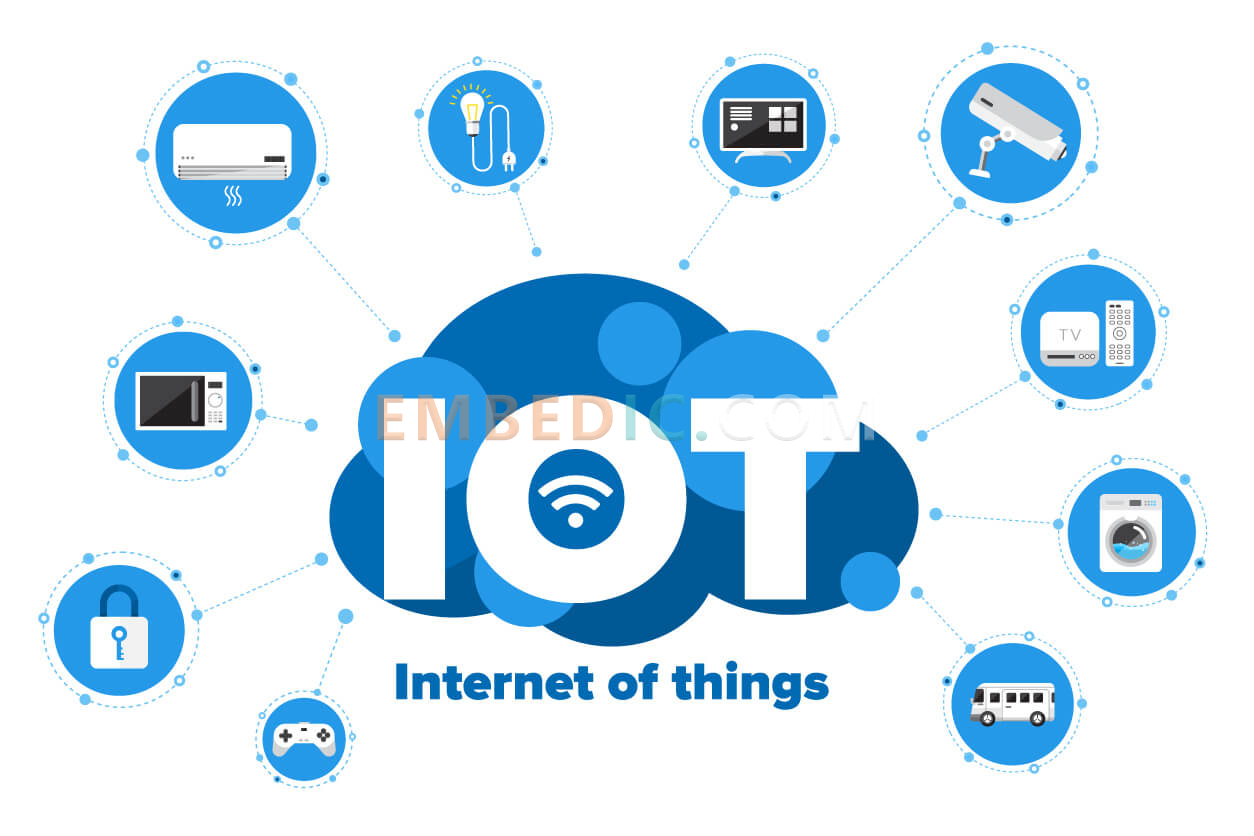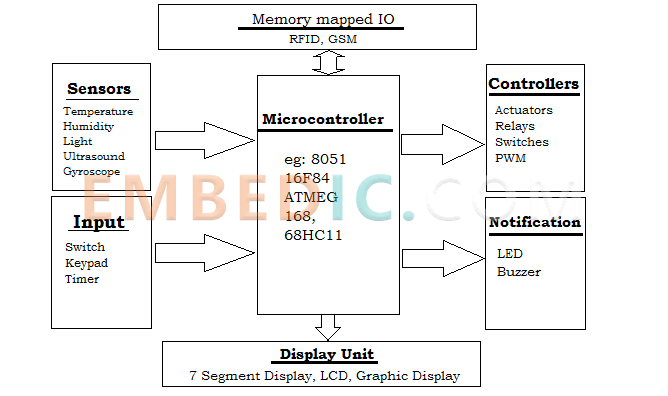The Internet of Things (IoT) has ushered in a transformative era by interconnecting physical objects through sensors and software, giving rise to IoT embedded systems. These systems, equipped with advanced hardware and software, enable seamless communication and data exchange, fostering automation and efficiency in various domains.
As we delve into the realms of IoT and embedded systems, it is essential to understand their individual characteristics, the convergence of the two in IoT embedded systems, and the impact of recent advancements on their applications.
The Internet of Things (IoT) is a term that encompasses the interconnection of various physical objects, or "things," equipped with sensors, software, and other technologies. These connected devices are designed to exchange data with each other and other systems through the internet. IoT spans a wide range of items, from common household objects to advanced industrial tools. Currently, there are over 7 billion connected IoT devices, and projections suggest that this number will reach 10 billion by 2020 and 22 billion by 2025. In essence, IoT enables devices to communicate and share information, leading to enhanced functionality and automation in various aspects of our daily lives.

An embedded system is a specialized computer system designed for a specific purpose, typically with a focus on performing dedicated functions. It is built around a microprocessor or microcontroller, which is an integrated circuit containing essential components like a processor, memory, and input/output peripherals on a single chip.
The distinctive feature of an embedded system lies in its ability to execute digital processing tasks, setting it apart from basic hardware devices that may only consist of circuitry and a power source. Embedded systems often incorporate sensors to monitor and interact with their environment.
At its core, an embedded system involves both hardware and software components. The hardware includes the microprocessor or microcontroller, while the software is specifically crafted to carry out the system's dedicated function. These systems can vary in complexity, ranging from a single microcontroller to more intricate setups involving multiple processors, peripherals, and network connections. The complexity depends on the specific task for which the embedded system is designed.
Applications of embedded systems are diverse, spanning from simple devices like digital watches and microwaves to more sophisticated implementations in hybrid vehicles and avionics. Remarkably, a substantial portion of microprocessors manufactured—up to 98 percent—is utilized in embedded systems.
An embedded system does not necessarily have internet connectivity, but an IoT embedded system always does. The primary distinction lies in their connectivity capabilities. Before the advent of IoT, embedded systems were designed to operate as standalone entities without internet connectivity. In contrast, IoT embedded systems are a subset of embedded systems but are specifically equipped to connect to the internet.
Key Points:
Internet Connectivity:
Evolution with IoT:
Scope and Range:
Subset Relationship:
An IoT embedded system refers to an embedded system that incorporates internet connectivity, making it part of the broader Internet of Things (IoT) ecosystem. These systems are often referred to as "smart" devices, as they can collect, process, and exchange data with other devices and systems over the internet. Unlike traditional embedded systems, IoT embedded systems are designed to communicate and share information, enabling them to be remotely monitored, controlled, and integrated into larger networks.
The hardware components of an IoT embedded system can include microcontrollers or microprocessors. These devices are integrated circuits (ICs) that form the core processing unit of the embedded system. Common examples of microcontrollers used in IoT devices include the Motorola 68HC11, PIC 16F84, and Atmel 8051. One key feature that distinguishes microcontrollers from microprocessors, such as the 8085, is their internal read and writable memory. These embedded systems may include peripherals like touch screens and keyboards, but they are not essential for defining an IoT embedded system.

The software aspect of an IoT embedded system depends on the specific application and functionality required. Manufacturers develop embedded software tailored to the electronic devices, such as cars, telephones, modems, and appliances, integrating them into the IoT ecosystem. The choice of programming language and platform is crucial, particularly in cases where real-time operations are essential. Embedded software can range from simple programs for tasks like lighting controls, implemented on an 8-bit microcontroller, to complex software used in critical systems such as missiles, process control, and airplanes.
In summary, an IoT embedded system combines hardware components like microcontrollers with internet connectivity, enabling communication and interaction within the IoT framework. The embedded software plays a critical role in defining the functionality and capabilities of these systems, making them integral to the growing network of interconnected devices in the Internet of Things.
Embedded systems for IoT are diverse and cater to specific applications across various industries. These systems leverage software and hardware integration to connect and communicate with other devices. Here are some popular types of IoT embedded systems and their applications:
Smart Home Automation Systems: These embedded systems are designed to automate and control various home functions for enhanced convenience and energy efficiency.
Applications:
Industrial Automation Systems: Used in industrial settings, these embedded systems monitor, control, and optimize machinery and processes for increased efficiency and reduced downtime.
Applications:
Healthcare Monitoring Systems: Embedded systems in healthcare monitor vital signs, medication schedules, and chronic conditions to enable real-time data transmission for timely medical interventions.
Applications:
Precision Agriculture Systems: These embedded systems in agriculture monitor environmental factors to optimize crop growth, improve yields, and reduce resource usage.
Applications:
Transportation and Logistics Systems: Embedded systems in transportation monitor vehicle performance, track routes, and manage logistics for efficient and optimized operations.
Applications:
Advancements in IoT Embedded Systems:
Recent technological progress has significantly propelled the evolution of IoT embedded systems. A notable advancement lies in enhanced IoT hardware, encompassing microcontrollers, sensors, and actuators. These components have undergone transformations, becoming smaller, more potent, and energy-efficient, facilitating the development of more sophisticated and effective IoT applications. Simultaneously, software innovations, such as advanced operating systems, machine learning, and edge computing, contribute to the intelligence and autonomy of IoT systems. Integration with artificial intelligence and machine learning algorithms further amplifies decision-making capabilities.
Case Studies:
Successful implementations of IoT embedded systems offer practical insights into their applications. In healthcare, IoT embedded systems have revolutionized patient monitoring, enabling remote and proactive healthcare interventions. In the industrial sector, real-time monitoring and predictive maintenance facilitated by IoT embedded systems have significantly improved efficiency and productivity.
Challenges Faced by IoT Embedded Systems:
Despite advancements, challenges persist for IoT embedded systems. Notably, security concerns arise due to the interconnected nature of devices, necessitating robust measures such as encryption, authentication, and secure communication protocols. Scalability and interoperability challenges emerge as the number of IoT devices increases, requiring standardized communication protocols for seamless device interaction.
Power consumption and energy efficiency are crucial considerations in the proliferation of IoT embedded systems. Optimizing energy usage becomes imperative to extend battery life and reduce environmental impact, utilizing techniques like power management, sleep modes, and renewable energy sources.
Reliability and maintenance pose additional challenges, demanding consistent performance across diverse environments and efficient strategies for system upkeep. Compliance with regulatory requirements, varying across regions and industries, becomes a critical consideration in the development and deployment of IoT solutions. Overcoming these challenges entails ensuring reliable hardware and software, developing efficient maintenance strategies, and adhering to regulatory standards.
In conclusion, the fusion of IoT and embedded systems has paved the way for a technological landscape marked by interconnected intelligence. From smart homes to industrial automation and precision agriculture, the applications of IoT embedded systems are diverse and impactful. While advancements in hardware and software have propelled their capabilities, challenges such as security, scalability, and energy efficiency persist. Overcoming these challenges requires a holistic approach, emphasizing reliable design, robust maintenance strategies, and adherence to regulatory standards. As we navigate the evolving landscape of IoT embedded systems, the journey promises not only technological innovation but also solutions that enhance the quality of our daily lives.
Manufacturer: Texas Instruments
IC DGTL MEDIA PROCESSOR 529FCBGA
Product Categories: DSP
Lifecycle:
RoHS:
Manufacturer: Texas Instruments
IC DGTL MEDIA PROCESSR 1031FCBGA
Product Categories: DSP
Lifecycle:
RoHS:
Manufacturer: Analog Devices
IC DSP 32/40BIT 400MHZ 324CSBGA
Product Categories: DSP
Lifecycle:
RoHS:
Manufacturer: Texas Instruments
IC DSP FIX/FLOAT POINT 176HLQFP
Product Categories: DSP
Lifecycle:
RoHS:
Looking forward to your comment
Comment